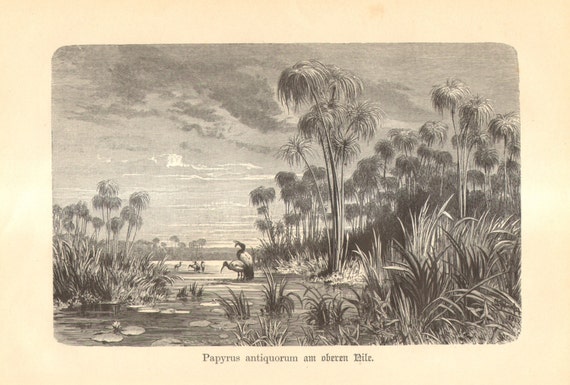
For longer documents, these pages were joined to create a papyrus roll (scroll). For example, Pliny, during the Greek period, describes the process somewhat differentlyĪnd included information on the various grades of Papyrus: For practical purposes, the papyrus was limited to a standard size running 47 cm in length at the most (29-33 cm on the average), and 22 cm in width, though by no means was this always so, particularly over Egypt's long history. Though during various periods of Egyptian history, this process could be slightly different, some papyrus continues to be made in a similar manner even today, for artistic purposes. Finally, after drying the surface of the sheet is polished to a smooth finish by rubbing (for example, with a shell or a piece of smooth ivory). The remaining sugar within this concoction seals the strips together. Next, this raw papyrus sheet is pounded once again, and left under a heavy weight (usually a stone slab) to dry for approximately six days. A second set of strips are placed at right angles to the first, again overlapping slightly. Next, the strips are pounded and the water drained away, after which they are placed side by side, overlapping slightly. Strips are next soaked in water to remove the sugar content. Quality of the papyrus strips decline as the strips are taken further from the center of the yellowish-white pith. The best of these strips, from the perspective of quality, comes from the center. After harvesting, the outer fibers are peeled away and the core of the stalk and sliced into very thin strips that are as broad as possible. The plant grows to a height of about ten feet. Technically, it is Cyperus papyrus, a part of the sedge family. Papyrus was, and continues today to be made from the papyrus reed that grows in freshwater marshes along the river Nile, though today this growth is rare and controlled.

Furthermore, the papyrus root was a source of food, medicine and perfume. Besides its use for producing a medium for writing purposes, papyrus was also used for mattresses on beds, for building chairs, tables, and other furniture as well as for mats, baskets, boxes, sandals, utensils, rope and boats. It's use continued until about the 11th century AD.

The earliest extant documented papyrus comes from Egypt's 1st Dynasty, but we believe it may have been used as early as 4,000īC.

It was light, strong, thin, durable and easy to carry, and for thousands of years, there was nothing better for the purpose of writing. They found this in their papyrus plant, a triangular reed which symbolized ancient lower Egypt. At about the same time as the ancient Egyptians moved from prehistory to history by developing a written language, they discovered the need for a medium other than stone to transcribe upon. Our English word "paper", is derived from the word "papyrus", an Egyptian word that originally meant "that which belongs to the house" (the bureaucracy of ancient Egypt).


 0 kommentar(er)
0 kommentar(er)
